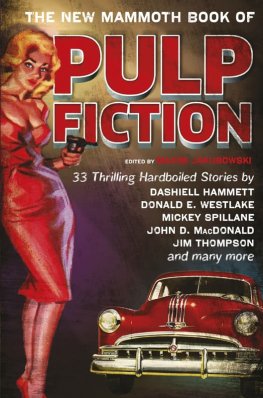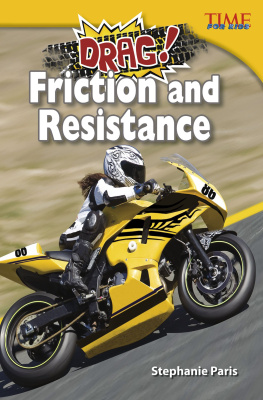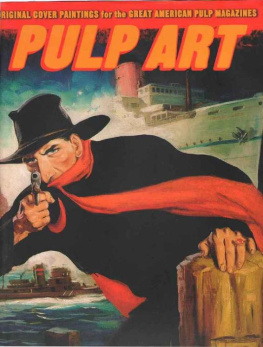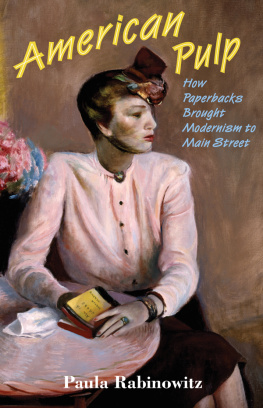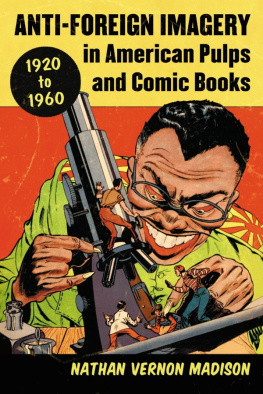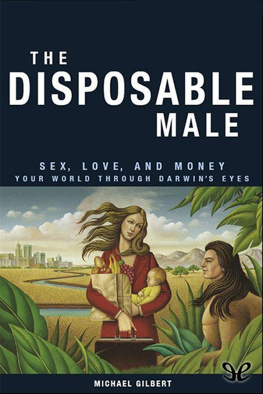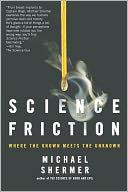Michael Bronski - Pulp Friction: Uncovering the Golden Age of Gay Male Pulps
Here you can read online Michael Bronski - Pulp Friction: Uncovering the Golden Age of Gay Male Pulps full text of the book (entire story) in english for free. Download pdf and epub, get meaning, cover and reviews about this ebook. year: 2003, publisher: St. Martins Press, genre: Art. Description of the work, (preface) as well as reviews are available. Best literature library LitArk.com created for fans of good reading and offers a wide selection of genres:
Romance novel
Science fiction
Adventure
Detective
Science
History
Home and family
Prose
Art
Politics
Computer
Non-fiction
Religion
Business
Children
Humor
Choose a favorite category and find really read worthwhile books. Enjoy immersion in the world of imagination, feel the emotions of the characters or learn something new for yourself, make an fascinating discovery.

- Book:Pulp Friction: Uncovering the Golden Age of Gay Male Pulps
- Author:
- Publisher:St. Martins Press
- Genre:
- Year:2003
- Rating:5 / 5
- Favourites:Add to favourites
- Your mark:
- 100
- 1
- 2
- 3
- 4
- 5
Pulp Friction: Uncovering the Golden Age of Gay Male Pulps: summary, description and annotation
We offer to read an annotation, description, summary or preface (depends on what the author of the book "Pulp Friction: Uncovering the Golden Age of Gay Male Pulps" wrote himself). If you haven't found the necessary information about the book — write in the comments, we will try to find it.
Pulp Friction: Uncovering the Golden Age of Gay Male Pulps — read online for free the complete book (whole text) full work
Below is the text of the book, divided by pages. System saving the place of the last page read, allows you to conveniently read the book "Pulp Friction: Uncovering the Golden Age of Gay Male Pulps" online for free, without having to search again every time where you left off. Put a bookmark, and you can go to the page where you finished reading at any time.
Font size:
Interval:
Bookmark:
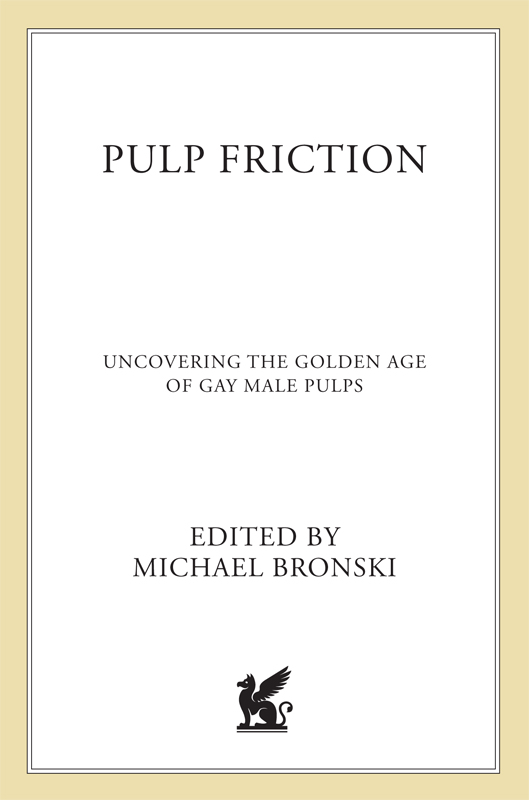

The author and publisher have provided this e-book to you for your personal use only. You may not make this e-book publicly available in any way. Copyright infringement is against the law. If you believe the copy of this e-book you are reading infringes on the authors copyright, please notify the publisher at: us.macmillanusa.com/piracy.
CONTENTS
Harrison Dowd
Dial Press, 1950
Lonnie Coleman
David McKay, 1959
James Barr
Greenberg, 1951
Jay Little
Pageant Press, 1952
Michael De Forrest
Woodford Press, 1949
Vin Packer (Marijane Meaker)
Fawcett Gold Medal Books, 1954
Ben Travis
Beacon Book, 1959
James Colton (Joseph Hansen)
National Library, 1964
Jeff X
Zil, 1968
Guild Press, 1969 (reprint from the 1950s)
Richard Amory
Greenleaf Classics, 1966
Carl Corley
PEC French Line, 1966
Jack Love
PEC French Line, 1967
Chris Davidson
Ember Library/Greenleaf Classics, 1967
Marcus Miller
Pleasure Reader, 1969
Bruce Benderson
Crusier Classics, 1975
Victor Jay
Travellers Companion, 1970
John Ironstone
El Dorado Editions, 1978
To Victor J. Banis, Bruce Benderson,
Joseph Hansen, Marijane Meaker,
and all of the other authors, living and dead,
who for decades before Stonewall pioneered
what we now call gay and lesbian literature
And to Joseph Canarelli
for thirty-five years of friendship and love
ACKNOWLEDGMENTS
This book would not have happened without the patience and encouragement of my editor, Keith Kahla (whose idea it was), and his assistant, Teresa Theophano. Thanks also to my agent, Jed Mattes, who was always available, understanding, and supportive.
Linda Schlossberg not only read the manuscript and offered expert advice but continually reassured me that, indeed, pulps were not only literature but great reads as well. Patrick Merla also offered his sage counsel and encouragement on the introduction and the entire project. Chris Bram, as always, heartened and inspired me with his persistent love of literature; a well-needed salve whenever I felt that these books, which I had come to love, were less than worthy of rediscovery.
Enormous thanks as well to John Howard, Lawrence Schimel, Katherine Forrest, William K. Dobbs, Larry Townsend, Richard Kasak, Bill Andriette, Brenda Marston, and Hubert Kennedy for their enormous help in tracking down the authors of some of these selections. And to John Mitzel, who over the years has supported my passion for collecting gay male pulps. Stephen Brophy and Brian Gale were incredibly helpful in the preparation of the manuscript. David Bergman was kind enough to share with me some of his own writings on pulp novels, which were invaluable. As invaluable were my friendships with Richard Voos, Carolyn Stack, Paul Van de Carr, and others who tolerated my reading them passages from these books and insisting that they look at book covers whenever they were at my home. And special thanks to production editor Robert Cloud, whose work has made this a better book.
Much of this work could not have been done were it not for the kindness of Linda Schlossberg and Alice Jardine in securing me access to Harvards Widener Library.
And thanks to all of the men who over the years collected and preserved their pulp novels. Without these books in archives, used bookstores, libraries, and personal collections, we would have lost a history that is invaluable as it is fascinating.
Introduction
Gay pulps: everyone knows the covers. With their fabulously garish colors, their cartoonish, mock-heroic studs, and tempting titles such as The Butt Boy, Dirt Road Cousins, Three on a Broomstick, and Up Your Pleasure, they are old-time gay male iconography for a new, younger generation of homosexuals. Falling somewhere between kitsch and kitchen decorations, these images, no longer on book jackets, now grace refrigerator magnets, postcards, and address books. Often they straddle clear-cut categories: they can be both hot and humorous, nostalgic and trendy, historic and emblematic of a contemporary sensibility. They are artifacts from the past that have acquired new, ironic meanings for the end of the last century and the beginning of this one. But these book coversand the novels they luridly trumpetare more than camp or a curious slice of gay life past. They are integral aspects of gay male culture and gay history that are as vital asindeed, inseparable fromour fight for equality under the law and the freedom to live our lives the way we choose. They are recordsalbeit fictional and reflecting and refracting the tenor and biases of their timesof how gay men lived, thought, desired, loved, and survived. Even with their exaggerations, high-queen dramatics, silly (even nave) eroticism, and sometimes internalized homophobia, they give us a glimpse of what it meant to be a gay man in the tumultuous years before Stonewall.
This book began as an anthology of paperback pulps that were published before the Stonewall riots in June of 1969. I had intended to draw upon themin all of their wildly varied manifestations and idiosyncraciesto sketch a picture of what gay male life was like before the enormous changes that the Gay Liberation Movement brought into the everyday social and political life of our culture. But as I read through the books, I discovered that what I had imagined and demarcated as a genre, distinct and discrete unto itself, was actually part of a far broader, older, and more complicated history and culture. The more extensively I read, the more I realized that gay male pulps were simply one of the more visible manifestations of a gay publishing, literary, and public culture that existed before Stonewall.
Gay pulp is not an exact term, and it is used somewhat loosely to refer to a variety of books that had very different origins and markets. By the 1950s the publishing industry in the United States had reached a new level of production. The printing and distribution of cheaply produced and cheaply priced paperback novels, which had begun in the late 1930s, steadily grew until it reached its full force in the early 1950s. Their eye-catching, provocative covers created and defined a new artistic and marketing genre; screaming damsels in distress represented a favorite motif, as did risqu clothing for both women and men. While mystery, crime, romance, and action stories benefited enormously from these graphic designs, authors from Shakespeare to Aldous Huxley to Edna Ferber also found a new readership. From joke and cartoon books (Out of My Trunk: Miltons Berles Joke Book) to informational guides (Bantam Books 1,000 Facts Worth Knowing) to current events (1945s The Atomic Age Opens ) the burgeoning paperback industry created new books and new markets.
This advance in the publishing world, particularly in the late 1940s and early 1950s, also included huge numbers of original novels focusing on illegal or taboo sexadultery, prostitution, rape, interracial relationships, lesbianism, male homosexualitytopics that were, in the words of the cover-copy writers, controversial, explosive, shocking, and ready to reveal the sordid truth in a way you have never read before. Often these books traded on current social obsessions and headline newsjuvenile delinquency, motorcycle gangs, wife-swapping, teen drug use, college scandals, mob racketeering, suburban malaise, and the erotic dangers of psychoanalysis. They represent, beneath a veneer of enticing exploitation, a compendium of the not-so-hidden preoccupations and fears of the tempestuous and socially unstable postwar years.
Font size:
Interval:
Bookmark:
Similar books «Pulp Friction: Uncovering the Golden Age of Gay Male Pulps»
Look at similar books to Pulp Friction: Uncovering the Golden Age of Gay Male Pulps. We have selected literature similar in name and meaning in the hope of providing readers with more options to find new, interesting, not yet read works.
Discussion, reviews of the book Pulp Friction: Uncovering the Golden Age of Gay Male Pulps and just readers' own opinions. Leave your comments, write what you think about the work, its meaning or the main characters. Specify what exactly you liked and what you didn't like, and why you think so.

